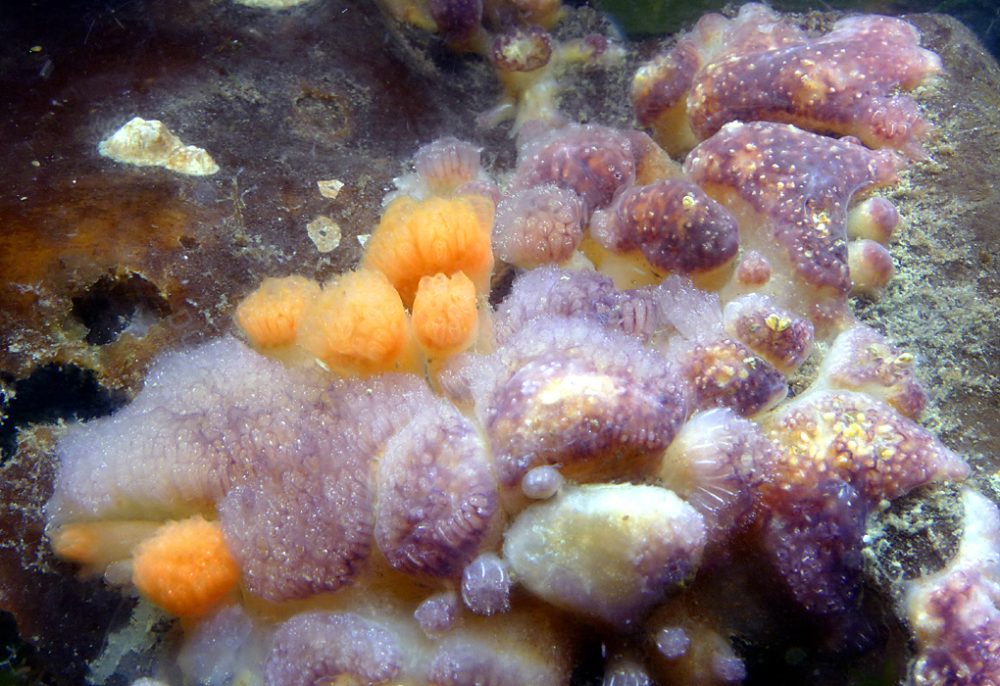The Mushroom Compound Tunicate
Author: Pauline Ewoldt
Scientific Name: Distaplia occidentalis
The Mushroom Compound Tunicate or also known as Distaplia occidentalis is distributed in the Northeast Pacific from Alaska to southern California. The species is common on intertidal rocks and in protected environments and is found from intertidal to 20m depths. If you are at a dock and look over the edge you may see these tunicates growing with other species. The colonial tunicate forms colonies of multiple club- or mushroom-shaped masses or stalked mounds. Its colour is variable from pale orange to purple, grey, yellow or cream. The zooids are circularly arranged or in an oval systems. They are colored white to pale grey. Each zooid has 4 rows of stigmata and the body is divided into two parts: thorax and abdomen. Despite looking more closely related to a sponge as adults, tunicates have a larval stage that looks like a tadpole and is free swimming before it plants it’s head on the substrate and metamorphosis into the stationary, filter-feeding, and often vase-shaped, adult. In respect to the larval stage they are a sister group to the vertebrates.

